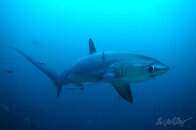Is underwater photography actually possible without a strobe?
Using the right camera/ sensor size?
Look at this video, with the Sony a6000 >> Auto Focus in Low Light
https://www.youtube.com/watch?v=_NS2YWSKi6U
The results are pretty amazing on a completely dark room....
So with Cameras like the Sony A6000 or Full frame cameras like the Sony A7?
what do you think the underwater results should be, with low light and the no red colours....?
Using the right camera/ sensor size?
Look at this video, with the Sony a6000 >> Auto Focus in Low Light
https://www.youtube.com/watch?v=_NS2YWSKi6U
The results are pretty amazing on a completely dark room....
So with Cameras like the Sony A6000 or Full frame cameras like the Sony A7?
what do you think the underwater results should be, with low light and the no red colours....?













